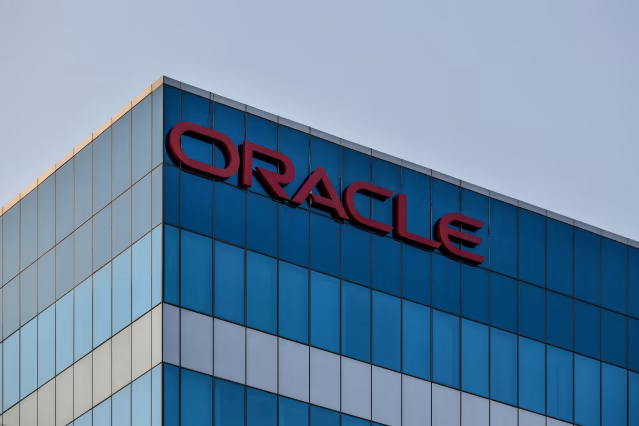Oracle Cloud Infrastructure is gaining attention as one of the top players in the cloud computing space. While companies like Amazon Web Services (AWS), Microsoft Azure, and Google Cloud have dominated headlines for years, Oracle has quietly built a strong position by offering high-performance, secure, and cost-effective cloud services.
In this article, we’ll explore what Oracle Cloud Infrastructure is, how it has grown over time, what makes it different from its competitors, and why more businesses are starting to choose it. We’ll also look at Oracle’s broader business strategy, innovations, and future outlook.
What Is Oracle Cloud Infrastructure?
Oracle Cloud Infrastructure (OCI) is a set of cloud services offered by Oracle Corporation. It provides compute, storage, networking, database, analytics, and other services. With OCI, companies can run applications and store data securely in the cloud.
Oracle launched its second-generation cloud infrastructure (known as Gen 2 Cloud) in 2016. This version was designed to be faster, more secure, and more reliable than traditional cloud platforms. It was built from scratch to meet the needs of businesses running mission-critical applications.
How Oracle Cloud Infrastructure Stands Out

1. High Performance
Oracle Cloud Infrastructure offers high-performance computing with bare metal servers and flexible virtual machines. This means companies can get more speed and control over how they run their applications.
For example, Oracle’s Autonomous Database runs faster on OCI than on other platforms. This database manages itself, including updates, backups, and tuning, reducing the workload for IT teams.
2. Strong Security
Security is built into OCI’s design. Oracle uses a concept called “isolated network virtualization” that separates customer data and applications from the rest of the system. This reduces the risk of cyberattacks.
Oracle also complies with major international security standards, making it a trusted choice for banks, governments, and healthcare companies.
3. Competitive Pricing
OCI is often more affordable than its bigger competitors. Oracle offers predictable pricing with no hidden costs. For example, data egress charges (fees for moving data out of the cloud) are lower compared to AWS and Azure.
Oracle’s Cloud Growth Story
Oracle was a late entrant in the cloud infrastructure market, but it has made significant progress in recent years. In fiscal year 2024, Oracle reported cloud revenue of over $20 billion, with strong growth in OCI and its Fusion and NetSuite applications.
One major reason for this growth is Oracle’s ability to migrate its existing customer base from on-premises systems to the cloud. Many companies that already use Oracle software, like databases and ERP systems, find it easier to move to OCI than to competitors’ platforms.
Big Wins: Oracle’s Key Cloud Partnerships
Oracle has landed major deals that have boosted its reputation in the cloud space:
- TikTok: Oracle provides cloud services to TikTok in the U.S., storing its user data to meet regulatory requirements.
- NVIDIA: Oracle teamed up with NVIDIA to offer powerful AI infrastructure.
- Microsoft Partnership: Oracle and Microsoft partnered to enable customers to run Oracle software on Azure while storing data in OCI. This is called the Oracle Interconnect for Azure.
These deals show that even other tech giants see value in what Oracle Cloud Infrastructure has to offer.
Oracle Cloud Regions: Expanding Worldwide
Oracle has been aggressively expanding its global cloud footprint. As of early 2025, Oracle operates over 50 cloud regions in countries like the United States, United Arab Emirates, India, Germany, and Japan. The company plans to add more regions in Africa and Latin America to support its global customers.
Oracle’s unique “dual-region” strategy allows customers to deploy applications in two separate locations within the same country. This is especially important for governments and large enterprises that need strong data sovereignty and disaster recovery capabilities.
OCI for AI and Machine Learning
Oracle Cloud Infrastructure supports artificial intelligence (AI) and machine learning (ML) workloads. It provides GPUs from NVIDIA and offers tools to build, train, and deploy AI models.
For example, Oracle’s Data Science platform lets developers collaborate on ML models with built-in tools for version control, model evaluation, and deployment.
Oracle is also integrating AI into its own applications, like Oracle Fusion Cloud ERP and HCM, helping businesses automate tasks and gain insights from their data.
Oracle’s Unique Advantage: Full Stack Offering

Unlike most cloud providers, Oracle offers both cloud infrastructure and enterprise applications under one roof. This full-stack approach allows businesses to manage everything—from databases to HR systems—in a tightly integrated environment.
This is especially attractive for customers that already use Oracle software. They can move their operations to the cloud with less hassle and take advantage of performance improvements and automation.
Challenges Oracle Still Faces
While Oracle has made great progress, it still faces challenges:
- Brand Perception: Many people still associate Oracle with traditional enterprise software, not cloud innovation.
- Strong Competition: AWS, Microsoft Azure, and Google Cloud still lead the market and have massive resources to compete.
- Talent Acquisition: Competing for top cloud engineering talent is tough, especially in a field dominated by Silicon Valley giants.
However, Oracle’s strategic focus, ongoing investments, and partnerships may help it overcome these hurdles.
Real-World Use Cases
Many businesses across different industries use Oracle Cloud Infrastructure for critical tasks. Here are a few examples:
- Zoom: The video conferencing giant uses OCI to scale its services and improve performance during high-demand periods.
- 8×8: A communications platform provider uses OCI to reduce costs and increase reliability.
- Mazda: The car manufacturer uses OCI to improve customer service and streamline operations.
These real-world examples show that Oracle Cloud Infrastructure can support large-scale, high-demand workloads effectively.
Oracle’s Sustainability Efforts
Oracle is committed to sustainability. The company aims to power all Oracle Cloud regions with 100% renewable energy by 2025. Many regions already use clean energy today.
Oracle also helps customers measure and reduce their carbon footprints with cloud tools and reporting features.
The Road Ahead for Oracle Cloud Infrastructure
Looking forward, Oracle plans to:
- Continue expanding its global cloud regions.
- Invest more in AI and machine learning infrastructure.
- Strengthen its partnerships with tech giants and governments.
- Help customers modernize legacy systems using OCI.
The company’s cloud-first strategy is working, and it shows no signs of slowing down. With a solid base of enterprise customers and growing interest from new clients, Oracle Cloud Infrastructure is positioned for long-term success.
Final Thoughts
Oracle Cloud Infrastructure has grown into a powerful, reliable, and secure platform for modern businesses. It’s not just a backup option anymore—it’s a real contender in the cloud wars.
With high performance, strong security, global reach, and competitive pricing, Oracle is winning over more customers every year. Whether you’re a startup, a global brand, or a government agency, OCI offers the tools and flexibility you need to succeed in the digital age.
As Oracle continues to innovate and expand, it’s a tech powerhouse that deserves attention—not just from developers and CIOs, but from anyone watching the future of cloud computing.
Read Next – Chevron Corporation Faces Global Energy Transition






